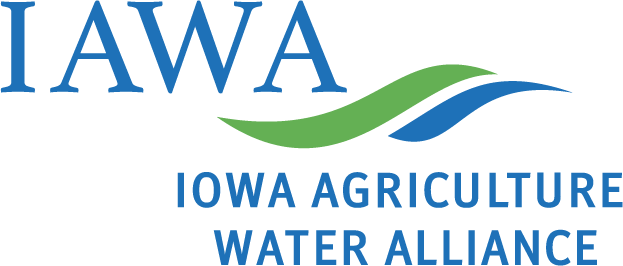Rooted in Stewardship: How Iowa Corn Growers Can Stay the Course on Conservation
By Greg Wandrey, Ph.D., Director of Sustainability, Iowa Corn Growers Association

As an Iowa row-crop farmer, you know that cover crop season doesn’t start after harvest—it starts now, during the growing season. Although most cover crops are planted after harvest, some of you are already seeding cover crop seed into the standing crop before harvest. It’s important to line up your cover crop seed and determine how you’ll apply it. This is also the time to explore cost-share options from both public and private sources.
It’s well understood that reducing tillage, planting cover crops, applying manure, and using 4R nutrient management are cornerstones to improving soil health. Iowa farmers have made great strides in all of these areas over the past 10 to 20 years.
You’re not just thinking about this harvest. You’re thinking years down the line about how your practices and decisions will enhance long-term profitability and productivity.
A Practical View of Sustainability
I grew up on a diversified crop and livestock farm in Delaware County, near Dyersville. My education and career have always been rooted in agriculture. I have a B.S and M.S. in agronomy and plant breeding, and earned my Ph.D. in plant breeding and genetics, then spent many years in the seed industry. Since February 2023, I’ve served as Director of Sustainability at the Iowa Corn Growers Association.
My work centers on helping corn farmers increase profitability in a sustainable manner. That means navigating regulations, securing tools and developing resources, and supporting the full sustainability picture.
We view sustainability as a three-legged stool: financial, environmental, and community. Our role is to help you remain productive and profitable while maintaining soil health and meeting your environmental and family legacy goals.
Making Adjustments, Trying New Tools
One way I help share ideas is through my monthly Stewardship Advocate newsletter, where I interview Iowa corn farmers and their families about their operations. I always ask: “What changes will you make in the next growing season based on what you learned in the previous season?”
The answers vary. Some are shifting tillage practices or choosing different hybrids, while others are testing microbial products or new precision technology. Still others are trying cover crops for the first time or perhaps tweaking their cover crop mix.
Farmers are always looking for ways to optimize corn production with practices that work for their individual operation. And if you’re interested in cost-share funds that might be available, I recommend checking out the online Iowa Cost Share Comparison tool. It’s a helpful guide developed by Iowa Agriculture Water Alliance (IAWA) that enables you to review and compare programs to find those that fit your situation.
We’re Investing in Results
Iowa’s farmers care deeply about the water on their farms. After all, it’s our drinking water. Our Iowa soils are highly productive, which helps us achieve some of the highest yields in the world. But those same soils also mineralize organic matter into nitrates. Farmers take great care in ensuring their soil, and the nutrients in their soil, stays on their land by utilizing a combination of conservation practices. After all, their soil is their livelihood, protecting it is a top priority.
That’s why Iowa Corn invests in science-based programs such as the Iowa Nitrogen Initiative (INI), managed by Iowa State University. INI is the most extensive on-farm nitrogen rate trial ever conducted. It’s helping us understand how geography, yield levels and management practices all interact.
We’re also a founding member of the Iowa Nutrient Research and Education Council (INREC), which has surveyed farmer practices since 2017. These surveys results, analyzed by the ISU statistics lab, show real improvement in the last 8-10 years. About a third of Iowa corn farmers no-till their corn, and nearly half no-till their soybeans. And despite yield increases—167 bushels per acre in 2010, 201 in 2023, and a record 211 in 2024—our average nitrogen application rates have stayed relatively flat. The survey also shows that Iowa cover crop acreage is around 3.8 million acres which is a substantial increase from the 50,000 acres planted in 2010.
All of this work is funded by checkoff dollars. Farmers have voted for and supported these programs year after year because they matter to us here in Iowa.
The Power of Farmer-to-Farmer Learning
None of us, whether in government, private industry or the nonprofit sector, can move the needle on conservation alone. It takes collaboration across sectors. But I believe the best opportunities for increased adoption come from farmer-to-farmer learning.
I recently met two young brothers who’ve just returned to their family farm after working off-farm. They attended a field day to learn about conservation practices. After listening to their questions, I connected them with another Iowa corn farmer who has made the journey from full tillage to no-till, cover crops and edge-of-field practices. I’m confident they’ll stay in touch and share experiences. That’s how change happens.
Looking Ahead
At Iowa Corn, we’re keeping a close eye on conservation-related policies, especially at the state and federal levels. One positive development is the survival of the 45Z tax credit, which we’re studying closely to determine how farmers might benefit from producing low-carbon corn.
If you’re trying to keep conservation a priority amid financial pressures and policy uncertainty, my advice is this: Stay informed, weigh your options, and focus on what works for your operation.
Sustainability starts with profitability. Because without it, nothing else is possible.
Editor’s Note: Iowa Corn Growers Association is a founding member and major investor in the Iowa Agriculture Water Alliance.
